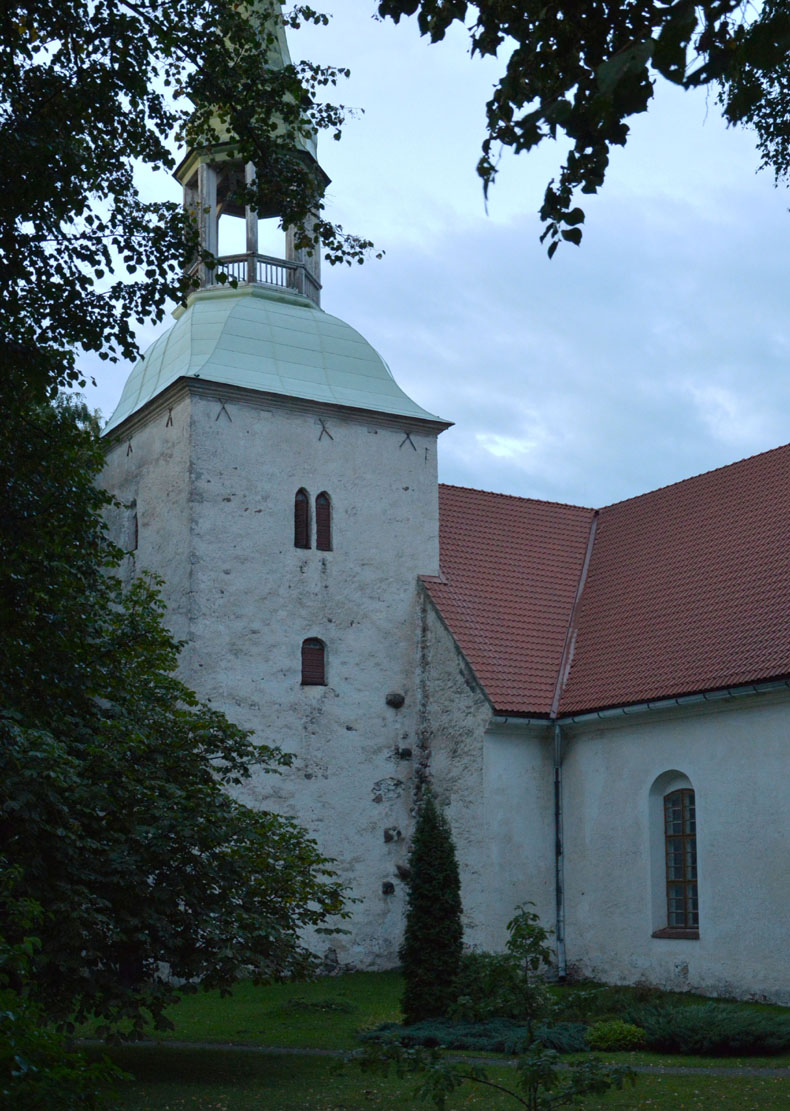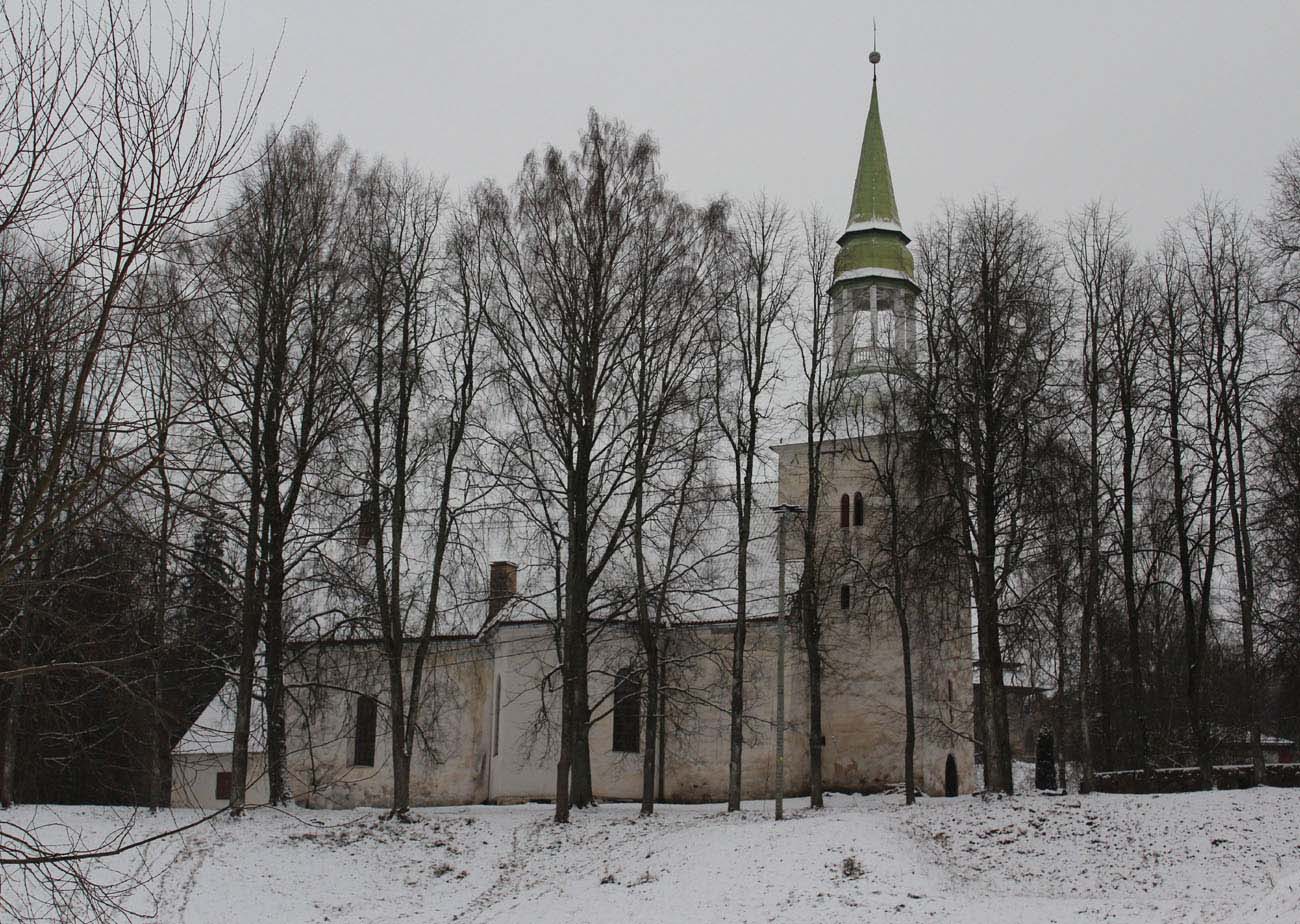History
The church in Rauna was erected around 1262. From the 16th century it was in the possession of Luteran, temporarily also played the role of the congregation of the Moravian brothers. When in 1577 the troops of Ivan the Terrible captured Rauna, they also destroyed the temple. The church restored after the Livonian War, during the Swedish-Polish war was again ruined. Documents from 1613 state that it was then without a roof. It was not renewed until 1636. At the beginning of the Great Northern War in 1702, the Russian army under the command of Boris Szeremietiew burnt the temple again. In 1736, the tower was renovated in baroque style, and in 1804 a new building was added to the south facade of the church. During World War I, the church was damaged again. The last transformations took place during the renovation in 1936-1937.
Architecture
The original medieval church was a relatively simple building with a single nave on a rectangular plan without an externally separated chancel and a four-sided tower added from the west. The nave was covered with a gable roof, supported on the east by a triangular gable decorated with blende (blind, shallow niche). The tower was probably crowned with a hip roof.
Current state
Currently, the original layout of the church has been partially obliterated due to the addition of an annex to the chancel on the eastern side, another one from the north, and a large annex from the south. Most of the window openings and the interior design were also transformed. From the original elements, the figural representation of Adam and Eve from the 14th century stands out above the entrance.




